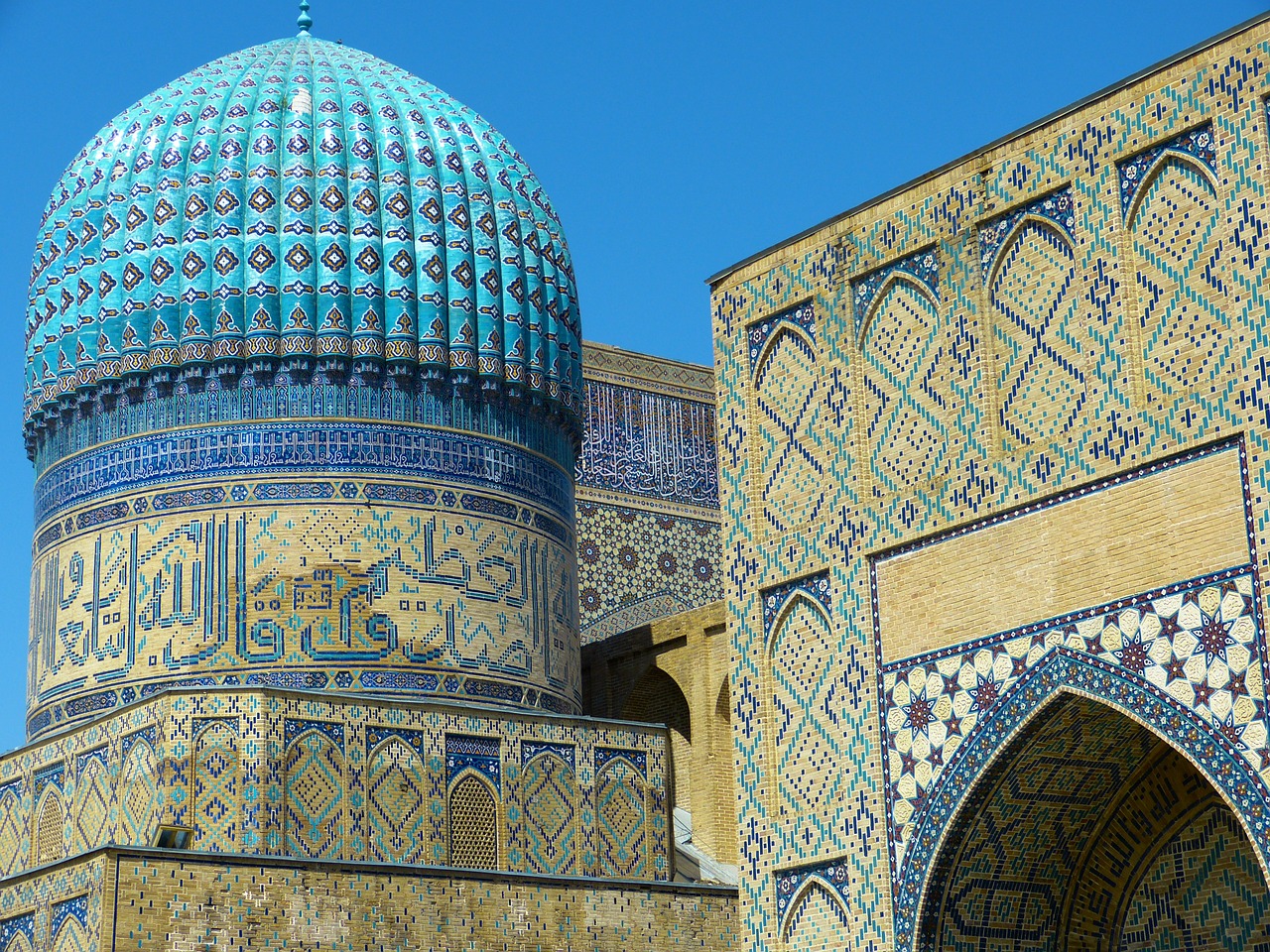A UNESCO World Heritage Site and once one of the most important Islamic centers in the world, the historic center of the city of Bukhara, Uzbekistan, is an amazing place to visit. To take a journey through this breathtaking cultural center, read on for a look at 10 of its most incredible attractions.
Po-i-Kalyan complex

One of the world’s finest examples of Islamic architecture, the Po-i-Kalyan complex is so impressive that it prompted even Genghis Khan, who was famous for razing conquered cities to the ground, to spare some of its buildings. Today, the complex consists of the Kalan Mosque, a beautiful structure with 288 domes and 208 pillars that was built as a rival to Samarkand’s famous Bibi-Khanym Mosque; and the Mir-i Arab Madrassah, a 16th century Islamic religious school that features a stunning entrance adorned in tile mosaics.
The Ark of Bukhara

Though it has been destroyed and rebuilt many times over the centuries, the ancient fortress known as the Ark of Bukhara has stood guard at the center of the city since the 5th century AD. Surrounded by an undulating wall up to 20 meters high and home to a beautifully preserved mosque, the Ark is a must-see cultural landmark, as well as one of the best places to get a spectacular view of Bukhara and the surrounding landscape.
Bolo Haouz Mosque
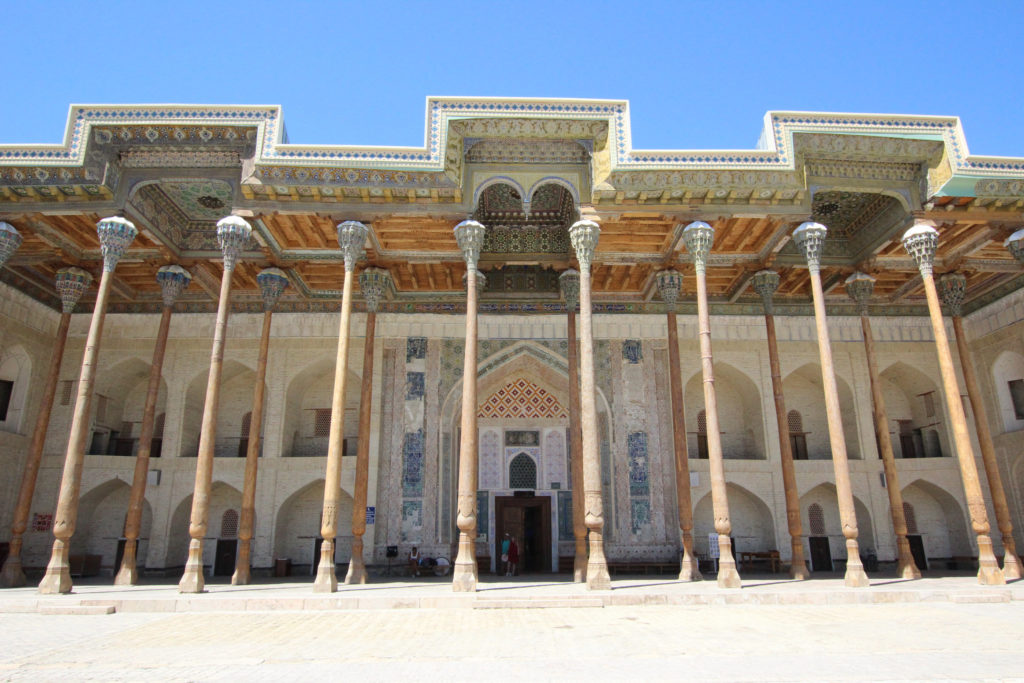
Hidden just behind the Ark of Bukhara is another historic gem: the Bolo Haouz Mosque. While the interior is fairly typical for the region, featuring plenty of gold and intricate designs, it’s actually the exterior that is the most breathtaking. The summer prayer room, located outdoors by the mosque’s entrance, is supported by more than a dozen richly carved wooden columns.
Lyab-i Hauz complex
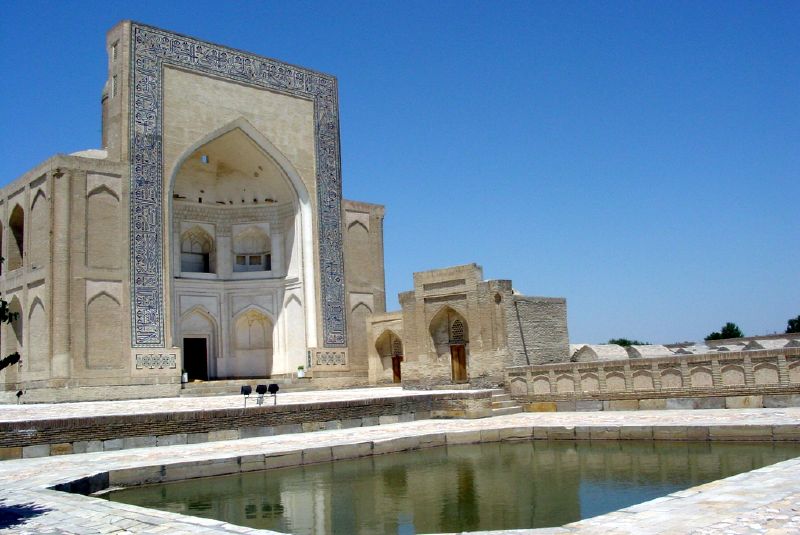
With a name derived from the Persian phrase for “by the pond,” it’s no surprise to find the Lyab-i Hauz complex sitting next to a beautiful reservoir, which once served as a source of fresh water for the city’s residents during the dry summer months. Other special features of the complex include the façade of its madrassah—which, with its stylized phoenix birds and deer, is one of the few examples of Islamic architecture and design that depicts animals rather than geometric shapes or verses alone. Frequent performances of traditional dance and music are offered inside during the tourist season.
The trading domes
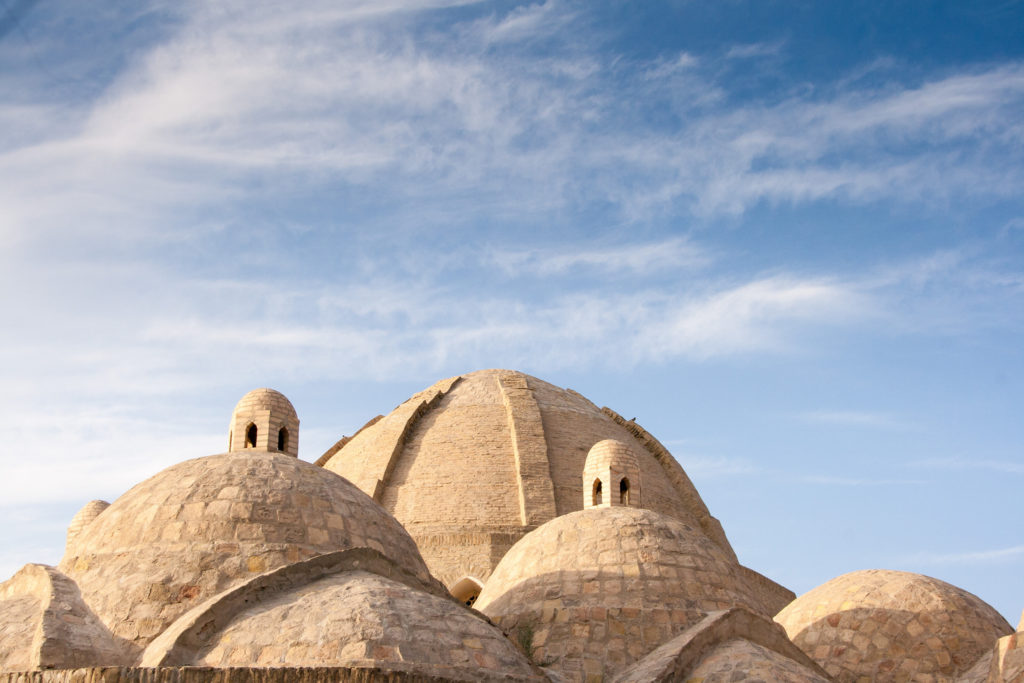
Historically, the heart of any Uzbek city was its vibrant bazaar, and the trading domes in central Bukhara are no exception. Today, the complex isn’t really a true bazaar, as there are only souvenir shops inside, but its ancient architecture makes it well worth a visit. Wandering down the arcades and looking up at the unique arched ceilings, it’s easy to imagine the place as it would have been a thousand years ago, full of merchants from India and China trading spices, silks, and incense.
Chor Minor
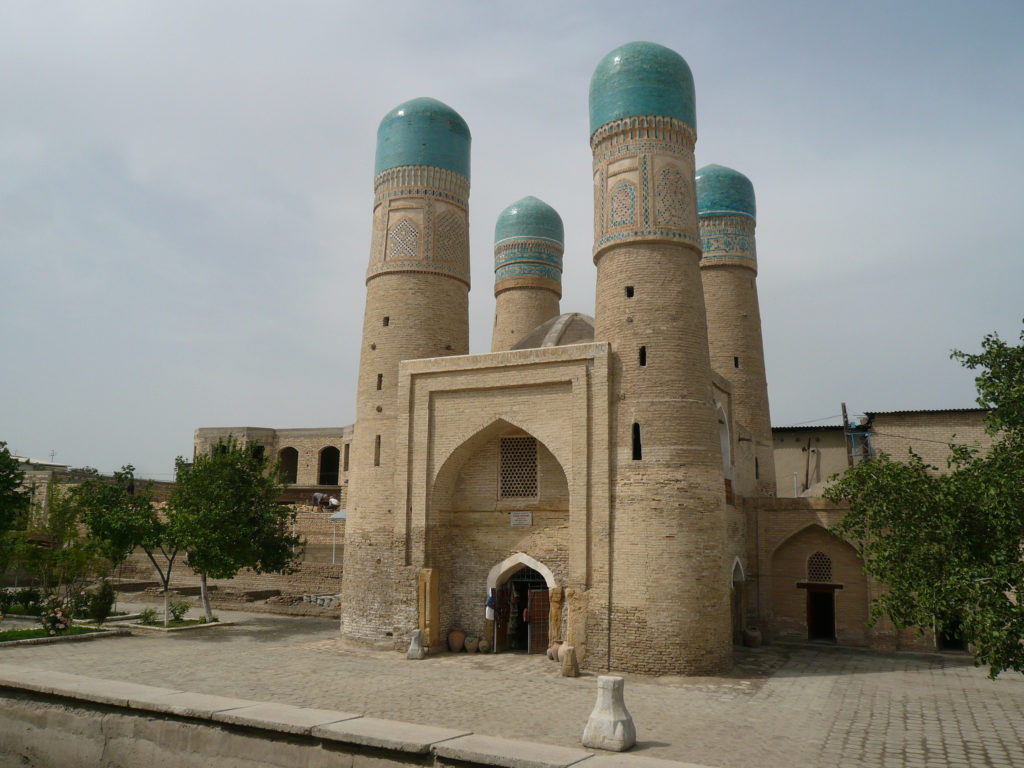
Although Bukhara is home to many grand, imposing monuments and landmarks, others are smaller in size, but no less wonderful. The unique little mosque known as Chor Minor is only about 15 meters high, but its beautiful proportions and four turquoise minarets make it a pleasing example of smaller scale Islamic architecture.
Baha-ud-Din Naqshband Bukhari shrine
Born in Bukhara in 1318, Baha-ud-Din Naqshband Bukhari was the founder of the Naqshbandi, which would eventually become one of the largest Sufi Muslim orders in the world. Consequently, he is a hugely important historic figure in Uzbekistan, and the shrine that commemorates the place of his death is now a hallowed site of pilgrimage for Sufis from Uzbekistan and beyond.
Chor-Bakr Necropolis

Located several kilometers beyond the outskirts of Bukhara and covering an area of about three hectares, this ancient cemetery is more than a thousand years old. It is of particular importance to Muslims, as it is believed to be the burial place of Abu-Bakr-Said, a trusted advisor of the Prophet Muhammad. It is common practice for many Uzbek Muslims to make a pilgrimage to the Chor-Bakr Necropolis before continuing on to Mecca.
Samanid Mausoleum
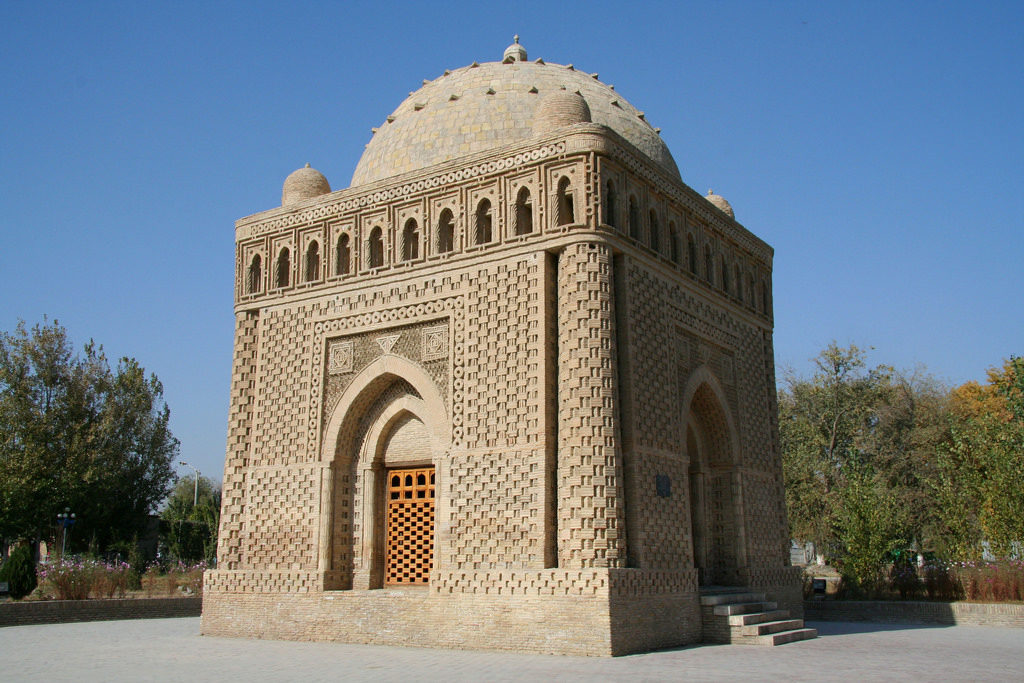
The Samanid Mausoleum may be small, but what it lacks in stature it makes up for in age: the small structure dates from the 10th century AD, making it one of the oldest buildings in Central Asia, as well as one of the only surviving buildings from the prosperous Samanid dynasty, who were Central Asia’s rulers throughout the 9th and 10th centuries.
Sitorai Mokhi-Khosa Palace
Having a summer palace to serve as an escape from the staggering heat of the city in summer has long been a tradition among Bukhara’s rulers. While several such palaces have been built and destroyed over the years, the Sitorai Mokhi-Khosa Palace has managed to survive for just over a century. Built between 1912 and 1918 by order of the last Emir of Bukhara, the palace was turned into a museum shortly after the fall of the Emirate of Bukhara in 1927. Today, it is home to Uzbekistan’s Museum of Arts and Crafts.
